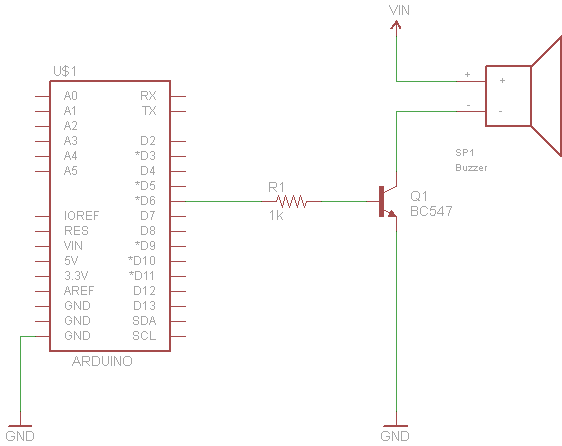apples:
What does it mean by solid state? Just that it has no moving parts? No mechanical parts.
Well, clearly a buzzer has "mechanical" moving parts. In this case, it is a little spring reed with a magnet on the end which is moved by an electromagnet and at one end of its stroke, impacts an end-stop giving the characteristic buzzing sound.
What is distinctive about "solid state" is that it does not have the electrical contacts to interrupt the current, of a conventional buzzer mechanism. The mechanism is in fact pretty much the same as that in brushless computer fans. It has the advantage of producing much less electromagnetic interference though you should still put a capacitor - at least 0.1µF - across it.
apples:
I think I would be safe to hook this directly to an Arduino output pin as it is 5v 40mA which is what Arduino is. I just want to check with someone first so that I do not blow the Arduino.
Bad idea. For one thing, the current quoted as 40 mA, though this is perhaps more likely to be what it draws at 15V than 5, is the average current and the impulse current will be much greater. If you then put a much larger capacitor across it to average out the current, the initial charging current of that capacitor will be much greater still. You would probably get away with it, but if you want reliability, no.
Just use a common transistor - BC547 - in the ground leg to switch it, and a 1k resistor to drive the base of that transistor from the Arduino. You will lose a couple of hundred millivolts, but you would lose much the same with most "logic" FETs. However, if you use a transistor to switch it, you can connect the positive to your "Vin" voltage, probably 9 or 12V.
fungus:
You could connect it to two pins and turn them both on at the same time. 20mA on each pin is fine.
Also a bad idea. One programming slip, or the code "runs wild" due to an interfering impulse, and you have two pins contending, shorting each other out.
